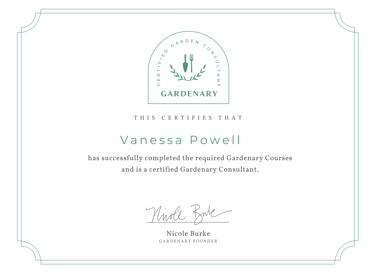Book a FREE 15-minute Discovery Call
6 Easy Ways to Help Pollinators This Fall
Help these wonderful creatures by making these little changes in your garden this season.
10/6/20253 min read
Hi, I'm Vanessa, your local Garden Consultant, and I would love to dream, plan, and grow with you!




At Your Dream Garden, we believe that the gardening journey should be an experience of beauty and bounty -- more enjoyment, less overwhelm.
Follow us on our socials:
Sign up for our newsletter and get a FREE Seasonal Checklist
Attend or host an event for your party!
Garden planning
Plant Shopping
Garden walks
Planting Party (perfect for get-together/ family activities)
Collaboration (Kindly indicate details in the comments)
Sign up to keep updated with upcoming events
When we think of pollinators, we often picture buzzing bees and fluttering butterflies in the height of summer. But the truth is, fall is one of the most important—and overlooked—seasons to support these vital creatures.
Why Fall Matters for Pollinators
Fuel for migration: Monarch butterflies and some species of hummingbirds rely on late-season nectar sources to make their long journeys.
Winter survival: Many native bees need food and safe shelter to make it through until spring.
Biodiversity boost: Supporting pollinators now ensures a healthier ecosystem for your garden next year.
** NOTE: AS A MEMBER OF THE AMAZON ASSOCIATES AFFILIATE PROGRAM, I MIGHT EARN COMMISSION ON THE CLICKED LINKS AT NO EXTRA COST TO YOU. THANK YOU FOR YOUR SUPPORT!


Ways to Support Pollinators in the Fall
1. Plant Late-Blooming Flowers
Pollinators need consistent food sources through the end of the season. In our area and planting zone (Michigan-Zone 6b), some great fall bloomers include:
Asters
Goldenrod
Sedum (‘Autumn Joy’)
Joe-Pye Weed
Native sunflowers
These provide rich nectar and pollen when summer flowers fade.


2. Leave the Leaves
Resist the urge to tidy every corner of your garden. Many pollinators—like bumblebee queens, moths, and butterflies—use leaf litter and plant debris as winter shelter. By leaving a layer of leaves, you’re giving them a safe place to overwinter.
3. Hold Off on Cutting Back Perennials
Hollow stems of plants like coneflowers, bee balm, and ornamental grasses provide nesting and hibernation spots for native bees. Wait until spring to cut them back, and you’ll be supporting the next generation of pollinators.


4. Provide Water Sources
Shallow dishes with pebbles or a small birdbath can help thirsty pollinators, especially during dry autumn weeks. Just be sure to refresh the water regularly.
5. Avoid Chemicals
Fall is not the time to spray pesticides or herbicides. These chemicals can linger and harm pollinators that are already stressed while preparing for winter.


6. Plant for Next Year
Autumn is a wonderful time to add native plants to your garden. By planting now, you’re setting the stage for a rich pollinator habitat that will burst into life next spring.
A Gift That Keeps Giving
Supporting pollinators in the fall isn’t just about the survival of bees and butterflies—it’s about strengthening the resilience of your entire garden. A thriving pollinator population ensures better harvests, more blooms, and a healthier ecosystem overall.
By making small, thoughtful choices in your fall garden, you can give pollinators exactly what they need when they need it most.
As the days shorten and the weather cools, pollinators are busy preparing for winter or migrating south. A little thought and care in your garden can make all the difference.
🌸 Are you ready to create a thriving, bountiful, balanced garden?
Book a Garden Consultation and let’s plan your most beautiful, abundant, and pollinator-friendly season yet.
Don't let another season pass without trying your hand at something wonderful!
Schedule a FREE 15-minute call so we can get started on your gardening journey.
For more gardening inspiration, sign up for our newsletter and get a FREE seasonal checklist to keep you on top of your planting game this season.




